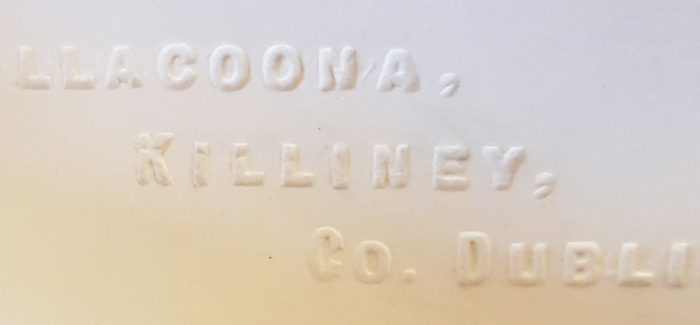Killacoona
| Name | Killacoona |
|---|---|
| Previous Names | Kildimo |
| Address | Military Road |
| Architect | Sir Thomas Deane |
| Exists today | Yes |
| On 1888 map | Yes |
Earliest map 1888
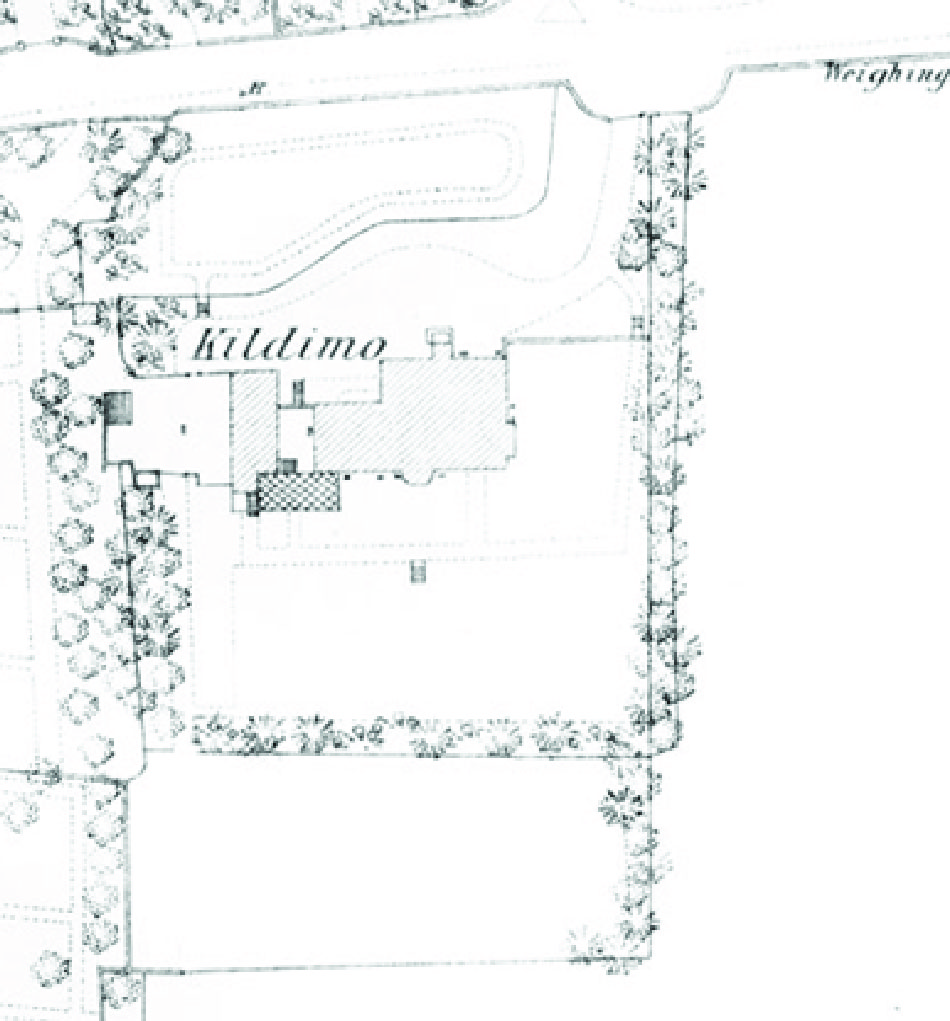
As described by Peter Pearson (1998)
Killacoona House is now incorporated into the Holy Child convent school, and, like The Grove and Carrigrennane, it was a large, redbrick, Tudor-style house, built facing south with views of Bray Head in the distance. The drawing room, now used as a library, is decorated with pilasters, carved in the Renaissance style, with masks and foliage. An earlier, smaller house, once called Martello Lodge (actually Martello Cottage, see map above) and later renamed Little Anstice, was purchased by the nuns and now serves as a residence. (This property was sold in 2020 and is now called Kilmuire)
Kildimo
R.C. Dobbs, son of William Carey Dobbs, who lived in the adjoining Ashurst inherited a small property at Kildimo, Limerick in c.1880. He sold that property and with the proceeds he purchased a six acre field which lay between Ashurst and the sea road. He built a small house, called Kildimo, which was designed by the architect Sir Thomas Deane. In due course F.S. Wrench of the land Commission, took a long lease on the property, enlarged it and renamed it Killacoona.
The Dobbs connection
It appears that the Dobbs family retained ownership of the property for a considerable time commencing with R.C. Dobbs c.1880 and then passing to Arthur Dobbs who appears to be temporarily residing in Killacoona whilst building works were being carried out at Ashurst in 1929/30.
Frederick Stringer Wrench resident c.1890-1921
Source: Courtesy of Peter Backman
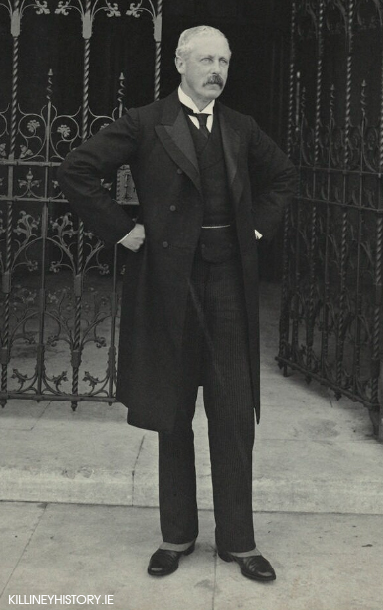
Frederick Wrench was born in Stowting, Kent, in the south east of England. He became a Land Commissioner in 1872 and in the same year he was living in Killacoona, a small village in County Fermanagh, when he married Charlotte Mary Bellingham, who came from a long established Anglo-Irish family able to trace its ancestry – at least on the Bellingham side – to the town of Castle Bellingham, in County Fermanagh, from the late 16th century. Charlotte’s father was a baronet and the family included barristers, magistrates, and at least one diplomat. Charlotte’s cousin was Alan Brooke who was to become Viscount Alanbrooke following his role as Chief of the Imperial General Staff in World War 2.
Frederick and Charlotte Wrench moved with their family to Killiney in about 1890 settling in at the house known as Kildimo but which they renamed Killacoona after the village where Frederick had lived at the time of his marriage. When Frederick retired in about 1910, he and Charlotte moved to Hythe, not far from Stowting where Frederick had been born, where they also named their house there, Killacoona.
They had four children: Mary, Evelyn, Winifride and Frederick. Their son Evelyn went on to become a pioneer of the early postcard business and you can read about his exploits here.
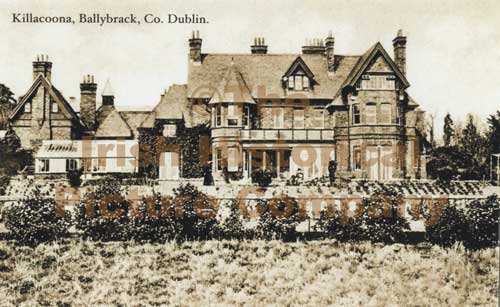
‘The Chief’ Sir William Haldane Porter c.1932-1944
Source: Wikipedia.

As M. Haldane Porter, the founding father of the Immigration service in the U.K. said in 1919: “One of the chief functions of the controls after the war would be to exclude Bolshevik agents from the U.K. At home this would be achieved by Immigration officers, while abroad officers should be attached to the consulate in the guise of vice-consuls, these officers working with and receiving their instructions from MI5.”
An Ulsterman, a tall commanding figure with a moustache, much resembling his father the Reverend Josias Leslie Porter who had been Dean of Queen’s College Belfast, Porter junior was known as a forceful, far sighted personality, a leader of men and strict disciplinarian. possibly due to a devout Presbyterian clerical upbringing. Popular with both his seniors and also his staff, he had the rare skill of being able to bring his staff into his confidence while never flinching from frank critiques to his political masters. His internal memoranda took on an avuncular tone, and he became something of an icon of high regard known affectionately to one and all as “The Chief”.
Upon retirement in 1930 Sir William and Lady Sybil made a move from the United Kingdom to Dublin, Ireland. There he took the position of Assistant managing director with the brewing firm Arthur Guinness Son & Co., a role he held until a year before his death in 1944. (He probably made this choice through an earlier connexion with Lord Iveagh, although this cannot now be confirmed.) An enthusiastic gardener, he frequently exhibited and took many prizes at flower shows in Dublin. Lady Sybil died on 25 March 1941 at their home, 98 James Street, Dublin, part of the Guinness estate.
Holy Child School
Source: Courtesy of Holy Child School Website
It was September in 1947 that the one-time County Hotel opened its doors for the first time as Holy Child School, Killiney. With just 34 students, the school was established under the aegis of the Society of the Holy Child Jesus (SHCJ), an order of Catholic nuns founded by Mother Cornelia Connelly, whose radical views on education had raised many 19th century eyebrows. Dismissing the value of learning by rote, Cornelia Connelly believed that “children learn best when taught with reverence and respect, and when they are actively engaged in their education”.
From its relatively small beginnings, 65 years ago, Holy Child Killiney grew rapidly, both in student numbers and in reputation.
In 1950, as the school went from strength to strength, a new wing was added to accommodate further classrooms, the library and the school hall. In 1962, the addition of the school chapel, with its innovative wall of stained glass windows, represented another important milestone in the development of HCK.
Since then, regular additions and improvements have continued to expand and enhance the facilities offered by the school including an all-weather sports pitch and most recently a new Sports Hall.
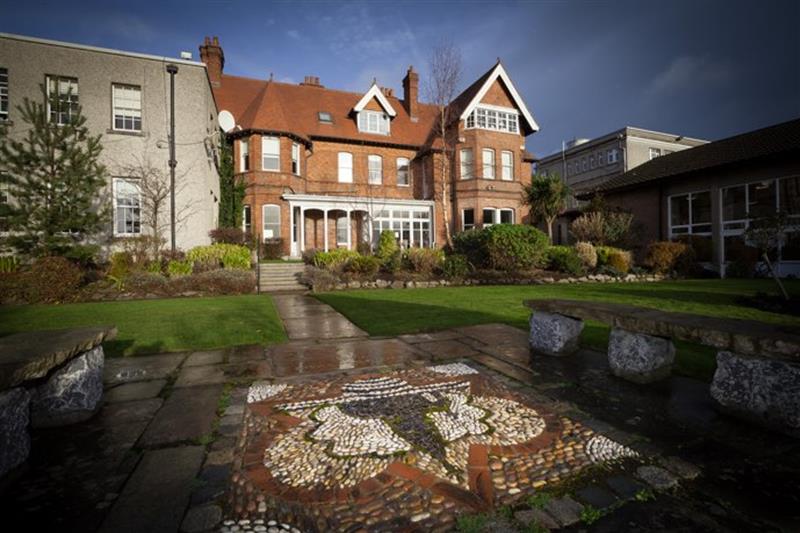
Occupants over the years
| Year | Occupant | House name |
| 1883 | Earliest mention: Newspaper advert for gardener | Kildimo |
| 1884/88 | Fitzherbert, Mrs. | Kildimo |
| 1892-1921 | Wrench, Frederick, esq. J.P. | Killacoona |
| 1923 | Vacant | |
| 1928 | Boydell, William | |
| 1930 | Boydell, William & Dobbs, Arthur | |
| 1932-1940 | Porter, Sir Haldane | |
| 1943 | Vacant | |
| 1947 | Maguire, Mrs. May | County Hotel |
| 1947-present day | Convent of the Holy Child Jesus |
